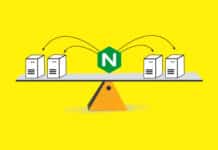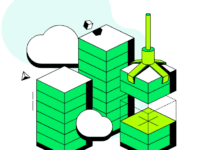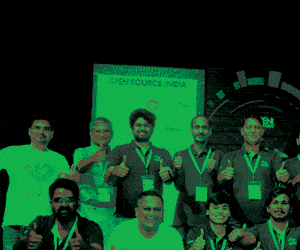Blockchain technology has revolutionised the way we transact with and secure data. However, its complexity and scalability issues have posed challenges for widespread adoption. Enter HydraChain, a groundbreaking solution that aims to simplify blockchain technology and address its limitations.
The Hydra blockchain is a hybrid that uses the transaction model of Bitcoin and employs the powerful virtual machine of Ethereum. It is based on the Bitcoin Core, Ethereum and Qtum. It is also called HydraChain or simply Hydra (the Greek mythological beast).
Some crypto stakeholders believe Hydra’s unique mechanisms will spear it to overtake Ethereum in the long run. Its scalability of up to 540 transactions per second is an important feature.
Understanding the complexity of blockchain
Hydra was launched in late 2020 and has since grown by more than 1000% in price. The chain quickly established a strong node infrastructure and now has more than 500 validators across the globe.
The Hydra blockchain supports Turing-complete smart contract functionality, which allows the execution of decentralised applications on a chain. Tokens and DApps (decentralised applications) built on Hydra profit from gas royalty of transaction fees (passive income). Every project contributes to the transactional economy, increases the rate at which Hydra chains are burnt, and helps to grow the overall size of the ecosystem.
The HydraChain fills an important gap at the protocol level by enabling a refund of transaction fees to token creators. The mechanism rewards project owners by giving a share of each transaction of their token. It creates a truly shared environment, where network participants are rewarded at all levels for the value they add to the ecosystem. Hydra also offers DEX (digital employee experience) capability.
The buzz around HydraChain is due to its unique features. Its inflation/deflation system ensures that the chain is secured with market driven mechanisms, and the fixed transaction fees allow seamless operation.
The emergence of HydraChain
In 2021, the HydraChain quickly grew from a simple network into a strong community-based economy. It has robust infrastructure and top tier node coverage across the globe. A diverse set of projects is being built on it.
Hydra is becoming a truly decentralised blockchain thanks to more than 900 nodes scattered across the globe. A healthy geographical distribution across six continents not only adds repetitiveness to the network, but also helps it protect against local risks and country-specific challenges.
There are several infrastructures built by HydraChain which help develop a network. Some of these include Hydra DEX, Hydra cross-chain bridge with Ethereum, mobile wallet app, browser extension wallet, web wallet, Hydra Explorer and staking client.
HydraChain as power saver
A single Bitcoin transaction as of 2022 releases 1,207kg of CO2. The total annual carbon footprint of Bitcoin is 114 megatons of CO2, which is equivalent to the Czech Republic’s nationwide energy consumption for a full year!
With Hydra, POS (point of sale) terminals can be run on Raspbery Pi and even on free tiers of AWS. A Raspberry is capable of mining Hydra blocks with as little as 5W of power consumption. Every block mined via Hydra and not Bitcoin approximately saves 2.5T of CO2 as carbon waste.
Some key characteristics of Hydra are:
- Decentralised governance protocol
- Dynamic nature of network settings and hybrid operations between UTXO and EVM layers
- Fixed transaction fees set in USD equivalent
- Burn on transaction fees
- Gas royalty for smart contract creators
- Flexible supply management via inflationary and deflationary elements
- A true proof-of-stake consensus that enables every single user to stake without any requirement for a minimum number of coins
- An average output of 75-85 transactions per second (TPS) with an elastic burst scalability of up to 540TPS
- One-click installers for running a node on an average household computer
- Various technical optimisations and repetitions
- Coin owners can capitalise their coins to get a price of the transactional economy from the LockTrip booking app and from all other DApps and tokens
- Revenue generation using a transactional economy with the ERC20, ERC223, and ERC721 smart contracts
- Easy installation of nodes for average users
Pros and cons
The advantages of Hydra are:
- The Hydra ecosystem is EVM compatible.
- It has a shared economy that benefits all stakeholders of the blockchain.
- Fixed transaction fees with 100% burn provides stability to the Hydra network.
- It covers up to 540 transactions per section with elastic capacity when required.
The disadvantages are:
- There are a limited number of projects on the blockchain despite its capacity.
- Since it uses open source software the transaction cannot be reversed.
| Factor | HydraChain | Bitcoin | Ethereum |
| Energy consumption/year
(3 nodes/year) |
0.00052 TW | 77.78 TW | 14.81 TW |
| Transaction fees | 0.17 ADA ($0.21) | .00039 BTC ($20) | 0.012 ETH ($20) |
| Scalability | Supported by core consensus protocol | Slow adoption of lightning network | No ETA |
| Formal verification | Available | Not available | Not available |
| Tx conformation time | 60 seconds | 1800 seconds | 39 seconds |
| Smart contract support | Available. Written in languages like Solidity or Serpent | Not available | Available. Written in languages like Solidity, Vyper, etc |
| NFTs (non-fungible tokens) | Available | Not available | Available |
| Block limit | Has limitations in creation of blocks. It creates new blocks only if there is a pending transaction | Block limit of 1MB | No block limit |
| Algorithm | Uses a unique consensus algorithm called Hydra Consensus | Runs on SHA-256 hash algorithm | Runs on Ethcash proof-of-work algorithm |
| Inception year | 2021 | 2009 | 2015 |
| Founder/Creator | Nikola Alexandrov | Satoshi Nakamito | Vitalik Buterin |
| Security | Secured transaction | Robust security and immutability | Less
security |
Table 1: Comparison between HydraChain, Bitcoin and Ethereum (Table credit: forum.cardano.org)
A next-gen technology
Hydra is an open source proof-of-stake blockchain that packs a unique combination of inflationary as well as deflationary mechanics as part of its economy, which work in parallel and help to solve total supply problems.
HydraChain has introduced a paradigm shift in the blockchain space as it enables interoperability and exchange across different blockchain networks. This is where cross-chain bridges, sometimes also referred to as blockchain bridges, play an increasingly important role.
It stands as a beacon of innovation in the blockchain landscape, offering a simplified and user-friendly approach to decentralised technology.












































































